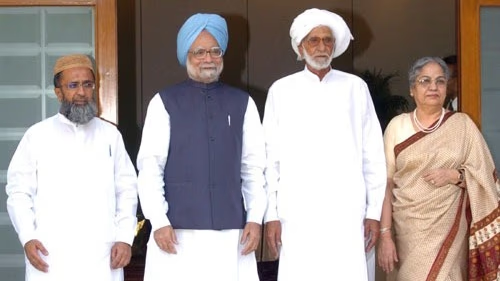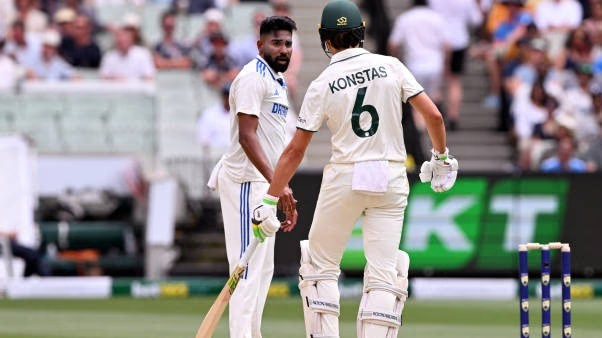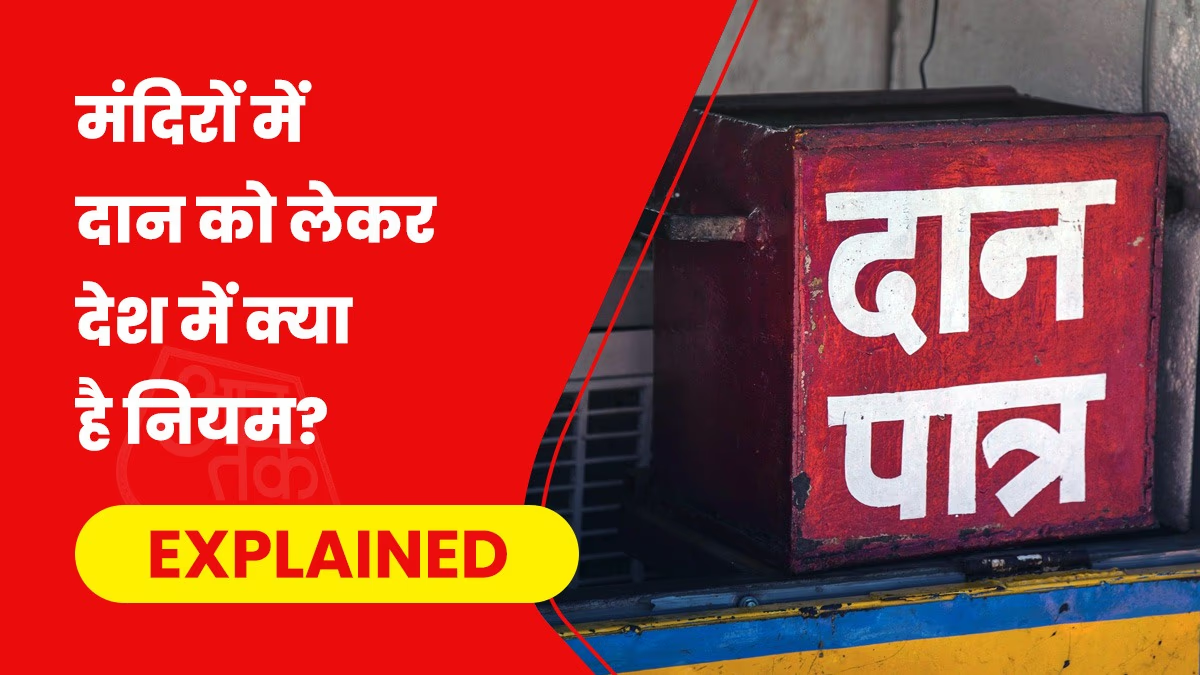
Source: aajtak
On the evening of December 26, 2024, India bid farewell to former Prime Minister Manmohan Singh. A stalwart leader known for guiding the nation towards unprecedented change through his impactful decisions, he will always be remembered for his unwavering commitment to progress.
In this photo from March 2, 2006, U.S. President George W. Bush (left) and Indian Prime Minister Manmohan Singh stand side by side at Hyderabad House in New Delhi before holding a bilateral meeting. A year later, on November 16, 2006, the U.S. Senate passed a landmark civil nuclear agreement with India, initially proposed by the leaders as a strategic move to strengthen ties. (Photo by Ravindran/AFP Files/AFP)

Source: aajtak
Among the many decisions that left a mark on India’s path forward, none showcased his resolve more than the Nuclear Deal decision of 2008. Despite economic downturns and widespread opposition, this decision underscored his determination to steer the country in the right direction.
The photo captures U.S. President George W. Bush shaking hands with Indian Prime Minister Manmohan Singh in New Delhi. (Photo - India Today)
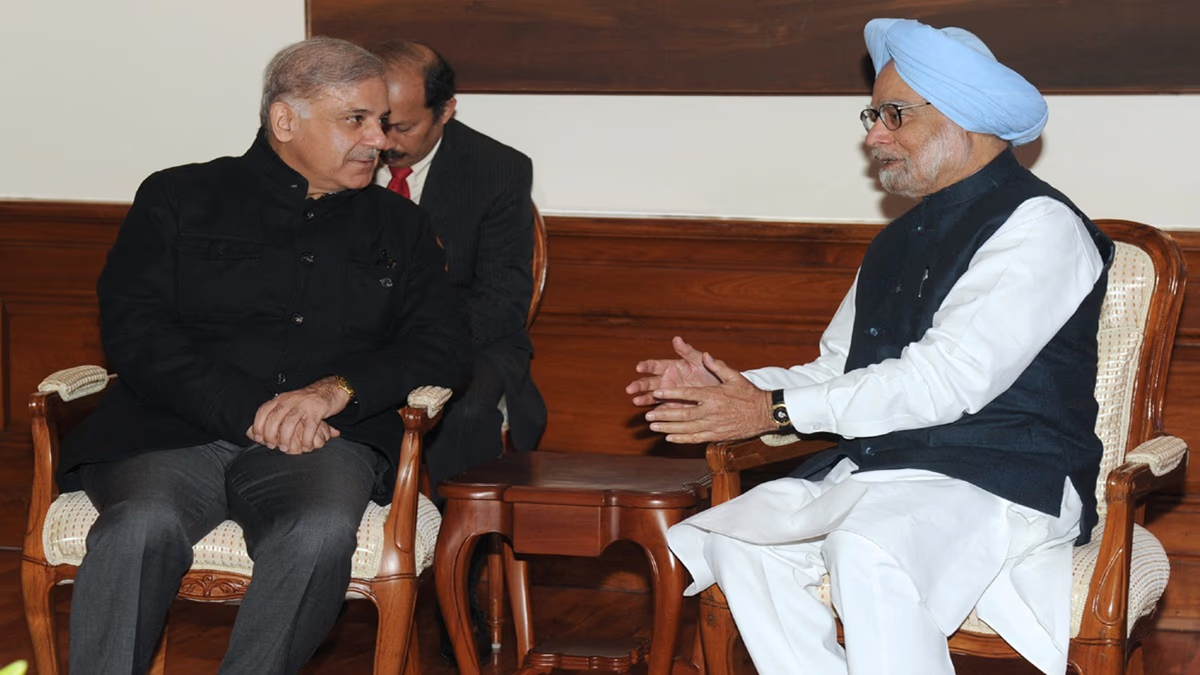
Source: aajtak
Dr. Manmohan Singh, India's 14th Prime Minister, was as much a scholar and economic expert as a politician. Known for his humility, calm demeanor, reticence, and diligence, these traits earned him a place in the hearts of many.
This handout image shows Muhammed Shahbaz Sharif, Chief Minister of Pakistan's Punjab state (left), meeting Indian Prime Minister Manmohan Singh in New Delhi on December 12, 2013. (Photo - AFP Photo/PIB)
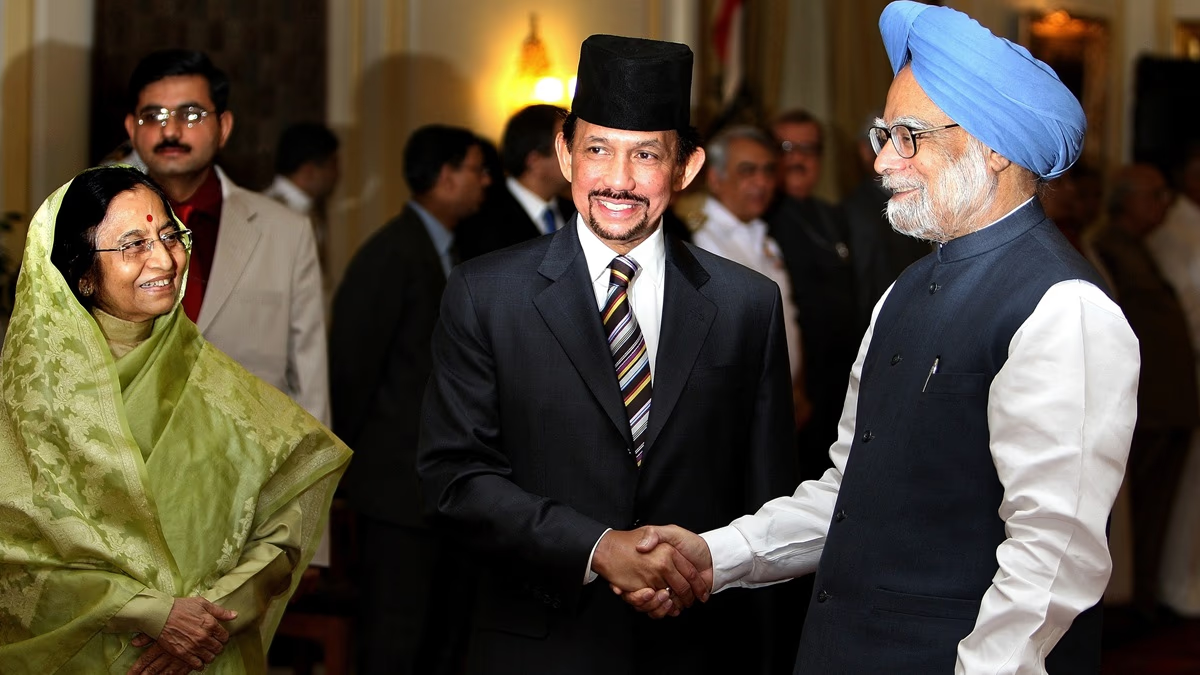
Source: aajtak
As Finance Minister, his deep understanding of economics provided strong momentum towards liberal economic reforms in India. He critiqued export-led trade policies in his book 'India’s Export Performance and Policy: Advances and Challenges', highlighting the importance of self-reliance.
The photograph shows the formal welcome ceremony on May 20, 2008, at Rashtrapati Bhavan in New Delhi, where Indian Prime Minister Manmohan Singh (right) is seen shaking hands with Sultan Hassanal Bolkiah of Brunei Darussalam (center), as Indian President Pratibha Patil (left) looks on. (Photo: Prakash Singh/AFP)
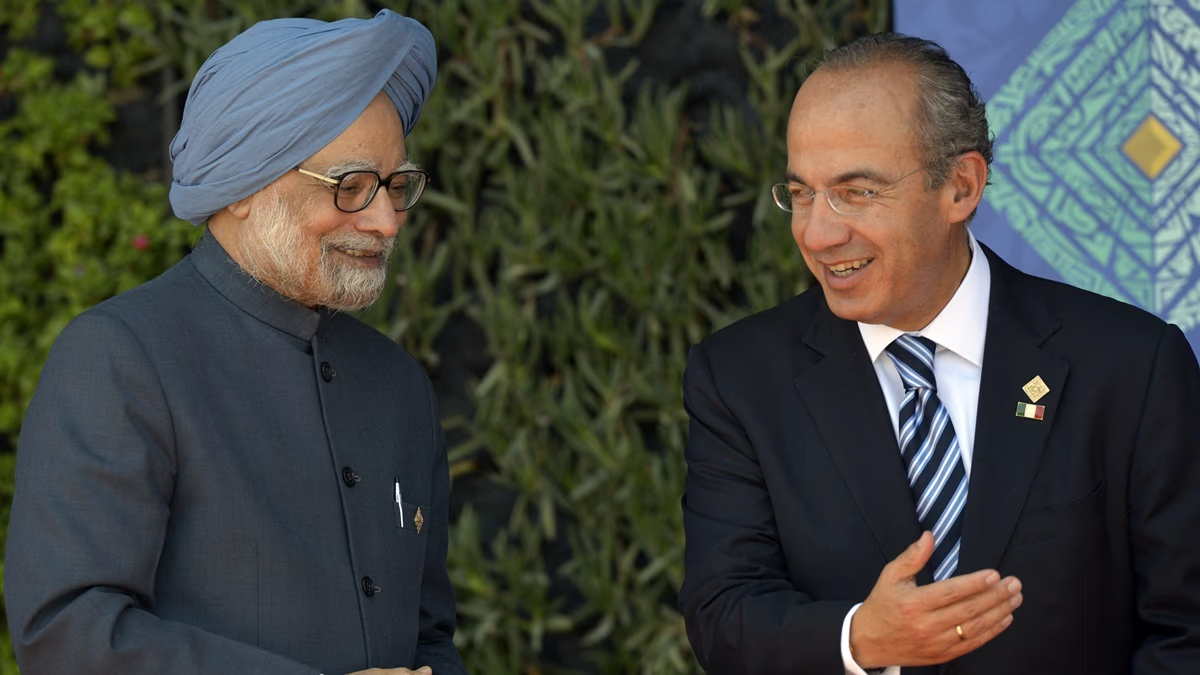
Source: aajtak
Notably, in 1971, Dr. Singh contributed as an economic advisor in the Ministry of Commerce and later, in 1972, became the Chief Economic Advisor in the Finance Ministry. He served in various significant roles including Secretary in the Finance Ministry, Vice Chairman of the Planning Commission, Governor of the Reserve Bank of India, Advisor to the Prime Minister, and Chairman of the University Grants Commission.
Pictured is Mexican President Felipe Calderón (right) welcoming Indian Prime Minister Manmohan Singh at the opening of the G-20 Leaders Summit on June 18, 2012, in Los Cabos, Baja California, Mexico. (Photo - Chris Bouroncle/AFP)
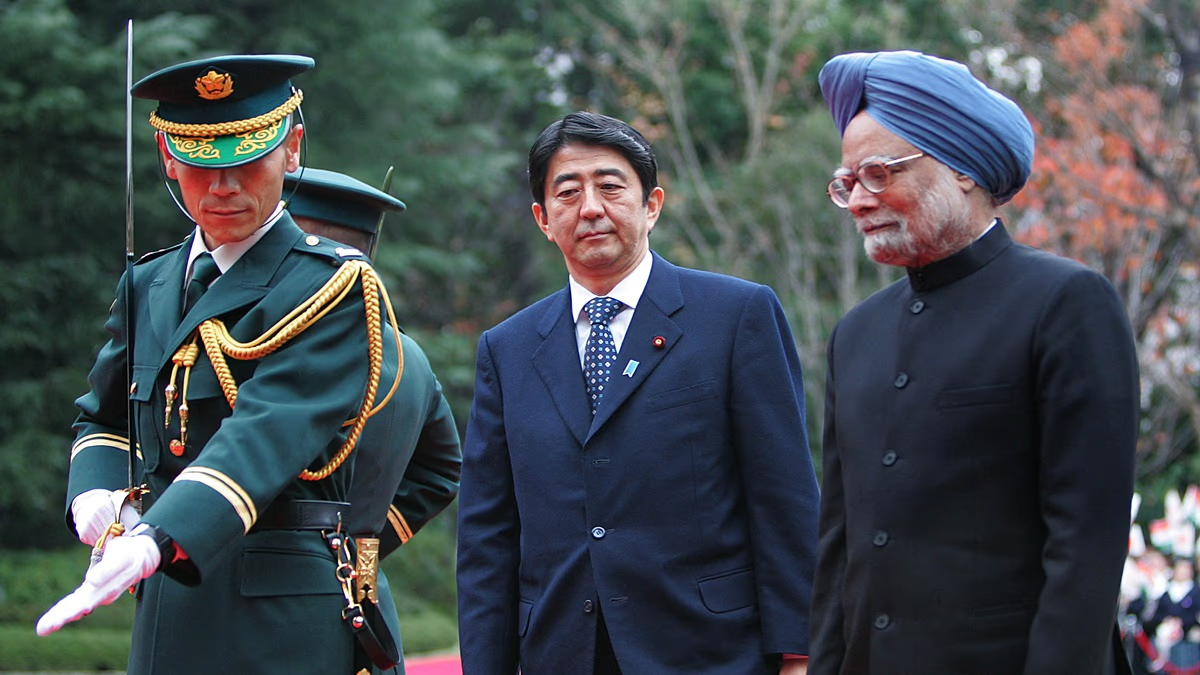
Source: aajtak
Starting in 1991, Dr. Singh served as India's Finance Minister during a pivotal period in India's economic history. His pivotal role in shaping the policy framework for economic reforms was widely acknowledged. These years remain integral to Dr. Singh’s legacy.
India's Prime Minister Manmohan Singh (right) is pictured with his Japanese counterpart Shinzo Abe at a welcoming ceremony led by an honor guard at the Prime Minister's official residence in Tokyo on December 14, 2006. Singh arrived in Japan for a four-day official visit on December 13. (Photo - Toshiyuki Aizawa/Pool/AFP)
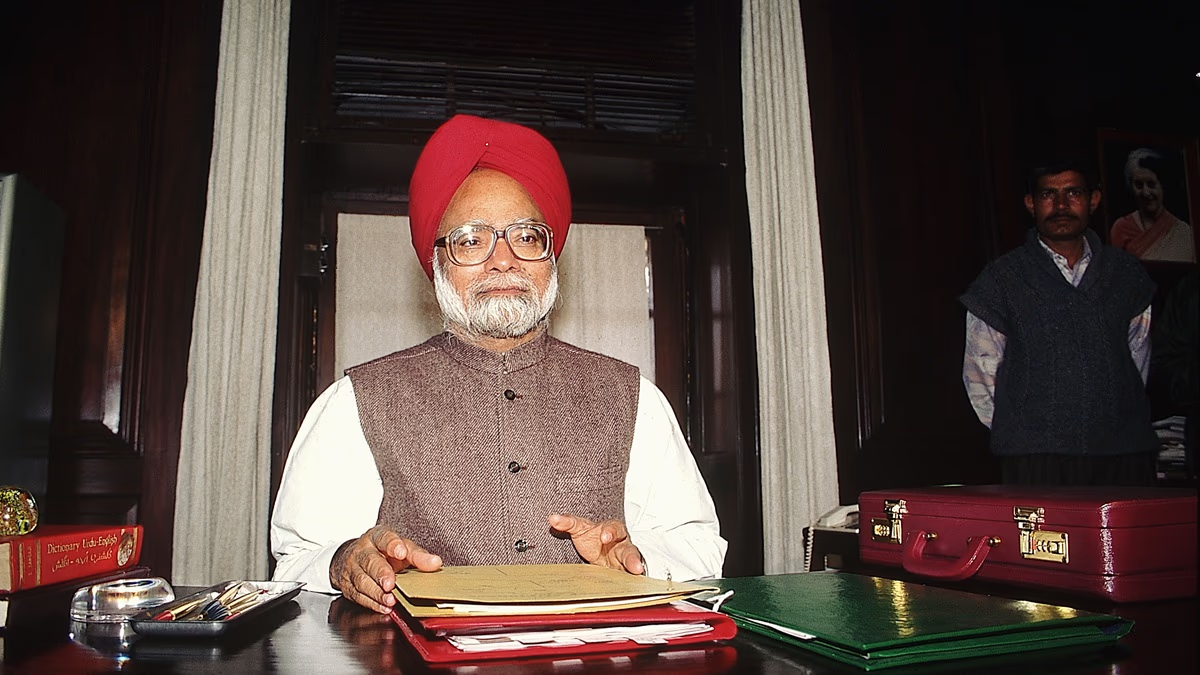
Source: aajtak
Throughout his political career, Dr. Singh remained a member of India's upper house of Parliament (Rajya Sabha) since 1991. He served as the Leader of the Opposition from 1998 to 2004. Following the 2004 general elections, he was sworn in as Prime Minister on May 22, 2004, and again on May 22, 2009.
The image shows Dr. Manmohan Singh seated in his office in Delhi. (Photo - India Today)
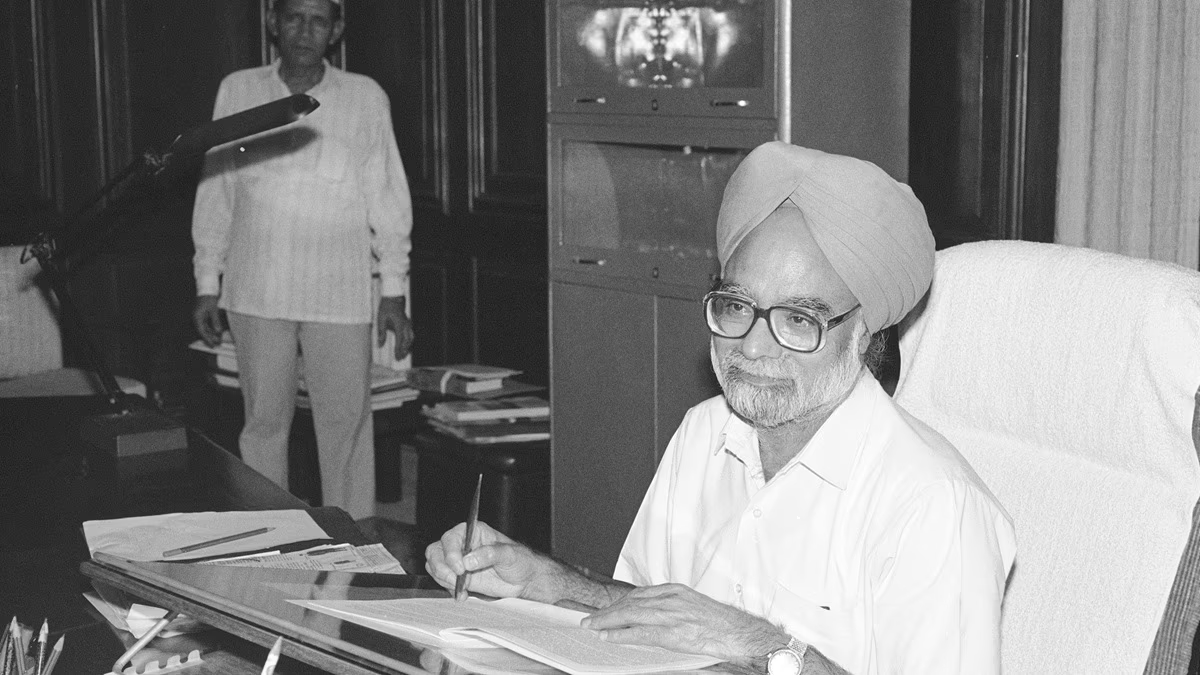
Source: aajtak
When Manmohan Singh took office as Finance Minister in 1991, India was grappling with severe economic crises. The foreign exchange reserves were critically low, barely enough for two weeks of imports. Bold reforms were essential, and both Narasimha Rao and Manmohan Singh led these initiatives. He abolished the License Raj and opened the economy to Foreign Direct Investment (FDI). (Photo - India Today)
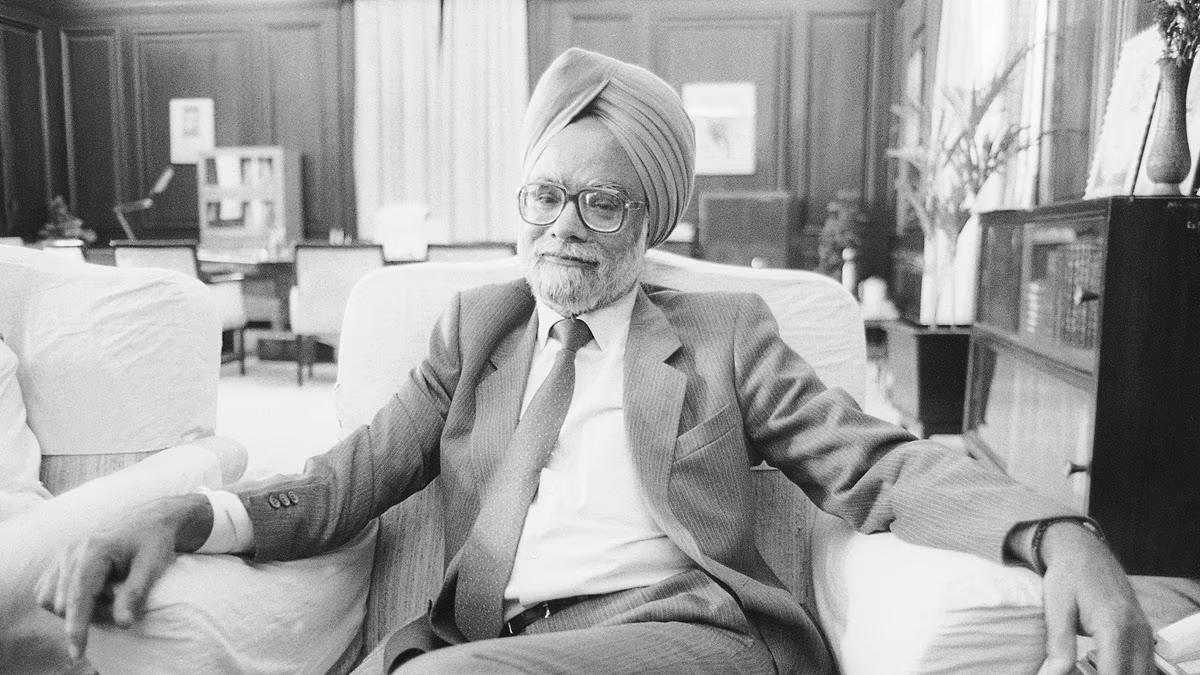
Source: aajtak
Manmohan Singh took a resolute decision to advance the India-U.S. civilian nuclear agreement. Alongside the then U.S. President George W. Bush, he outlined the agreement’s framework through a joint declaration on July 18, 2005, which formally took effect in October 2008. It represented a significant triumph for India. (Photo - India Today)

Source: aajtak
His firm stance on the nuclear deal also brought India and the United States closer. This decision led to a trust vote which his UPA government successfully surpassed, despite objections from several political parties.
This photo captures Manmohan Singh with AK Antony and Congress President Sonia Gandhi at a Congress meeting on September 12, 2019, at the headquarters in New Delhi. (Photo: Chandradeep Kumar)
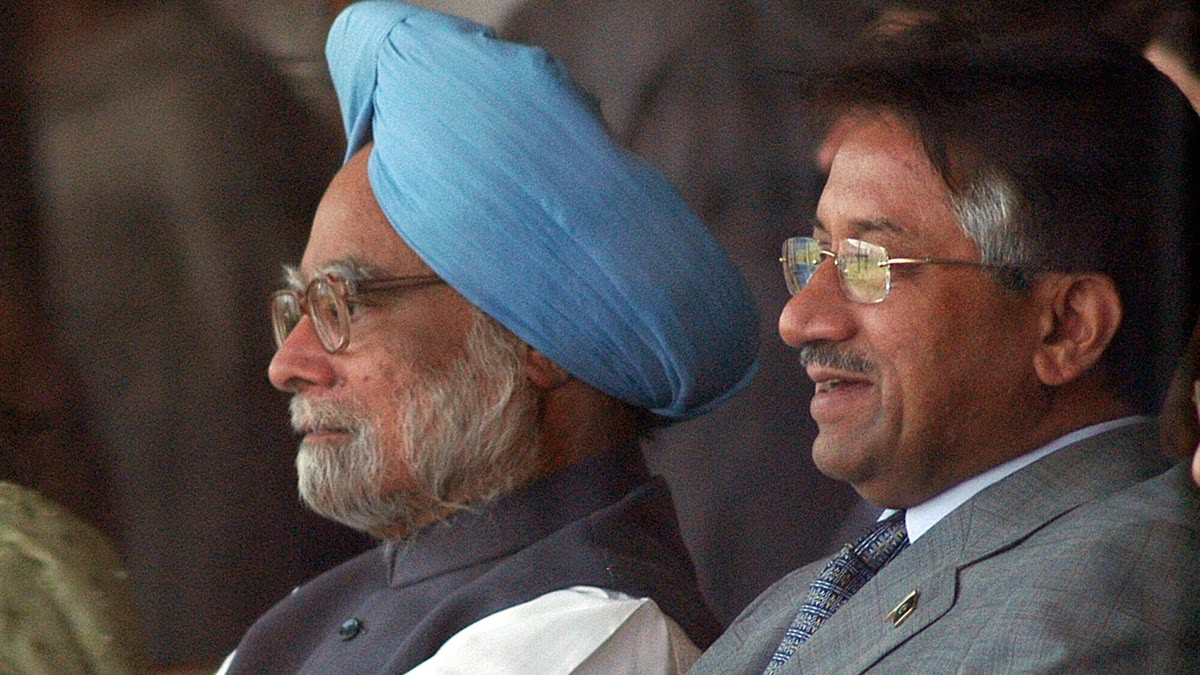
Source: aajtak
Convincing several coalition partners was a challenge Singh tackled during the nuclear deal negotiations, helped partly by then-President APJ Abdul Kalam, allowing some hesitant parties to drop their opposition.
This image captures Indian Prime Minister Manmohan Singh with Pakistan President Pervez Musharraf in New Delhi. (Photo - India Today)
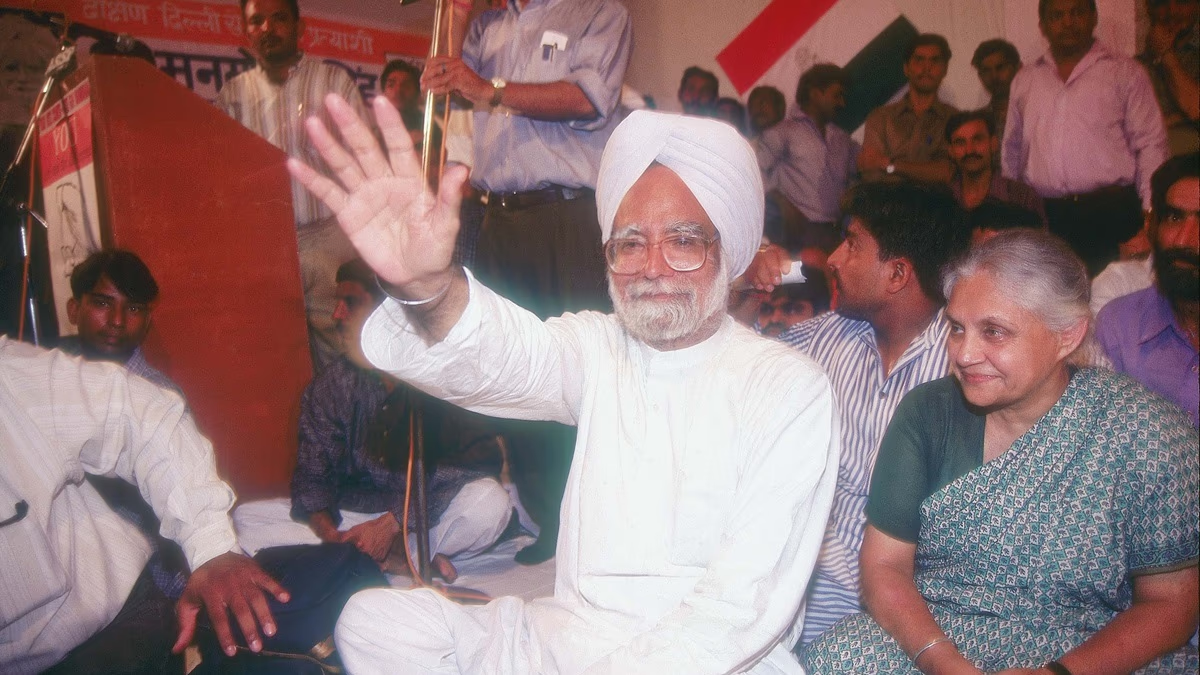
Source: aajtak
Although leftist parties strongly opposed the deal and withdrew their support, the Samajwadi Party switched its stance, backing Singh's government, which passed a crucial confidence test.
The photo features Manmohan Singh seated with Sheila Dikshit at a party function. (Photo - India Today)
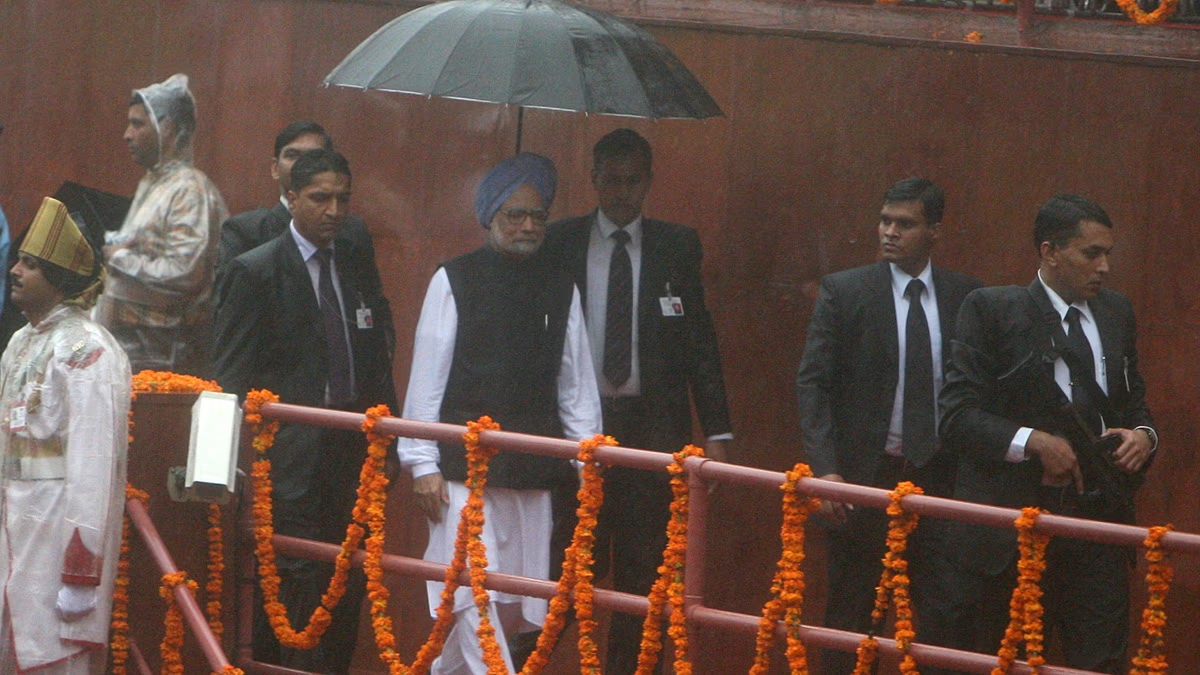
Source: aajtak
Guiding India through the 2008 economic meltdown was another defining moment of his tenure, rewarded with a renewed mandate in the 2009 Lok Sabha election. During his premier term, monumental initiatives like MNREGA, the largest employment guarantee scheme, and the RTI Act, were implemented.
This image shows Prime Minister Manmohan Singh at the 65th Independence Day celebrations in New Delhi. (Photo: Shekhar Yadav/India Today Group)
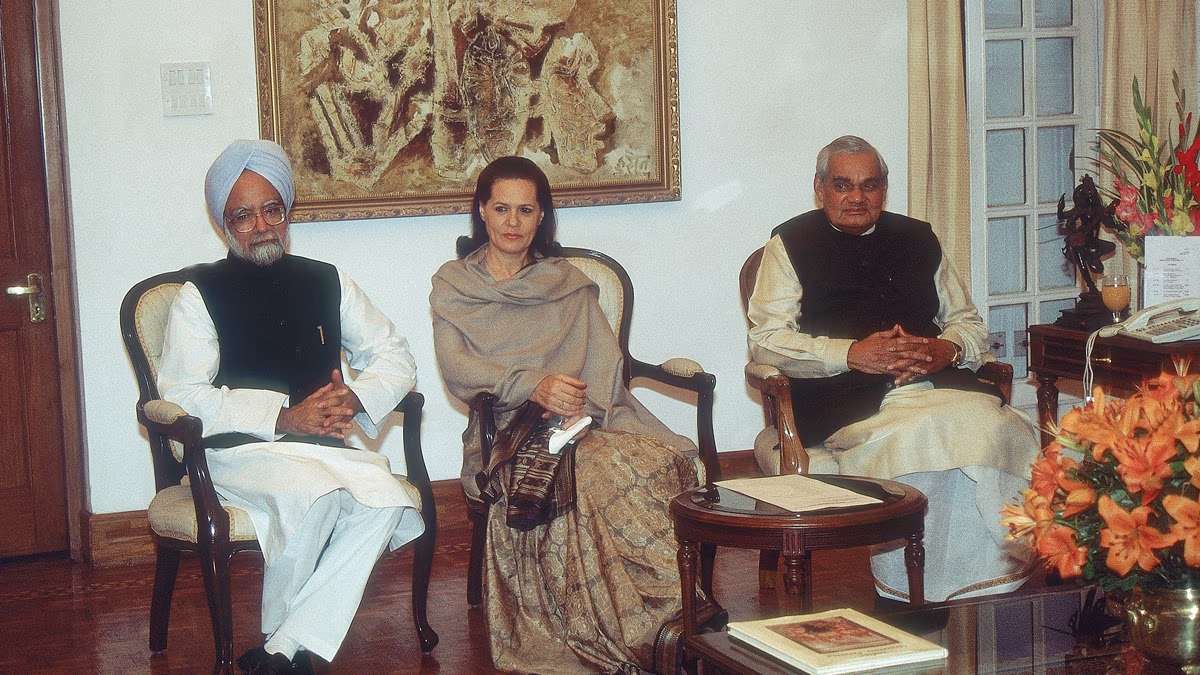
Source: aajtak
In Sanjaya Baru's 2015 book, 'The Accidental Prime Minister: The Making and Unmaking of Manmohan Singh', it is mentioned that Singh’s stance on the nuclear agreement erased memories of his subordination to Sonia Gandhi. Ultimately, Manmohan Singh emerged as the leader. Baru hailed the deal as 'Singh's crowning glory'. Under his leadership, the Congress won 206 seats in the 2009 Lok Sabha elections.
Pictured here are Manmohan Singh, Sonia Gandhi, and Atal Bihari Vajpayee. (Photo - India Today Group)
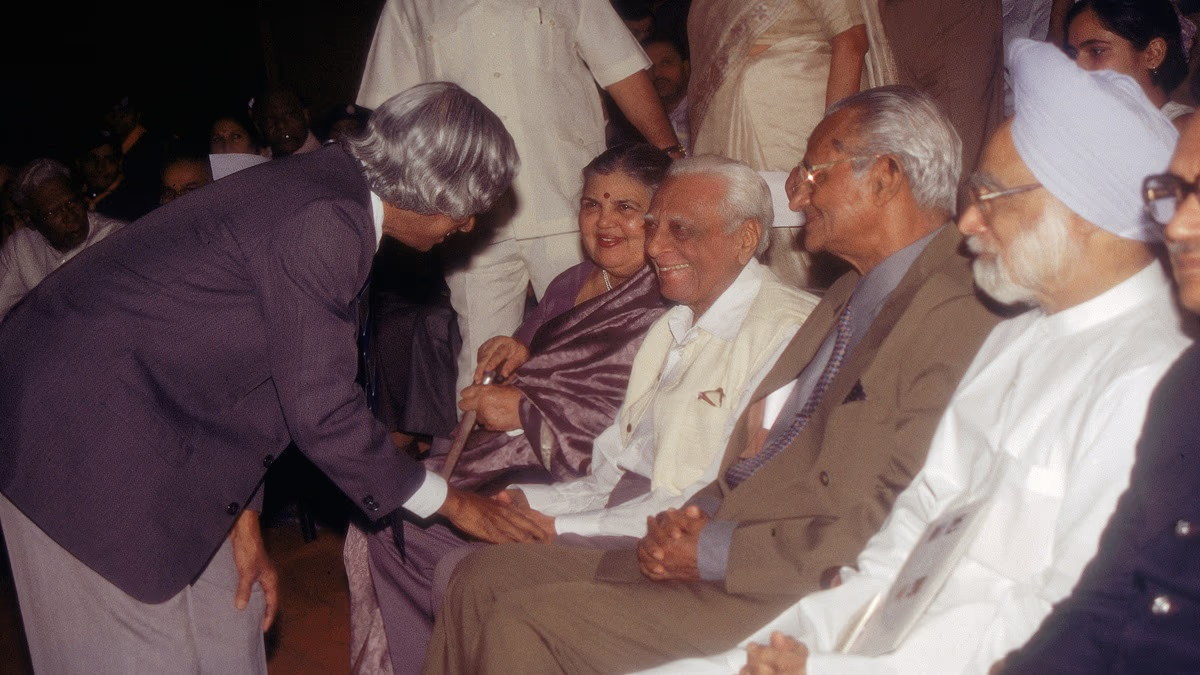
Source: aajtak
Born on September 26, 1932, in a village in Punjab province, undivided India, Dr. Singh married Gursharan Kaur, with whom he has three daughters. Completing matriculation from Punjab University in 1948 marked the start of an illustrious academic journey.
In this photo, Satish Dhawan, APJ Abdul Kalam, and Manmohan Singh are seen together in a meeting. (Photo - India Today Group)
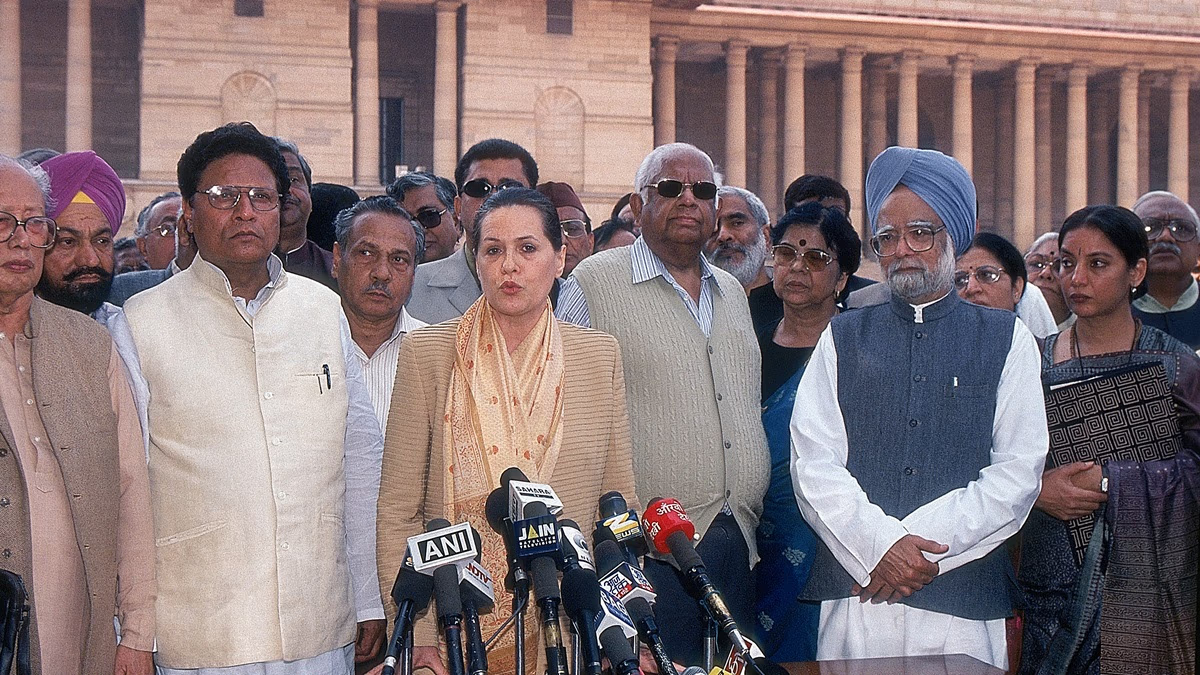
Source: aajtak
After completing school, he furthered his education at the University of Cambridge in the UK, graduating with honors in Economics in 1957. Later, in 1962, he attained a D.Phil in Economics from Nuffield College, Oxford University.
Here, Sonia Gandhi, Manmohan Singh, and other Congress leaders address the press. (Photo - India Today Group)
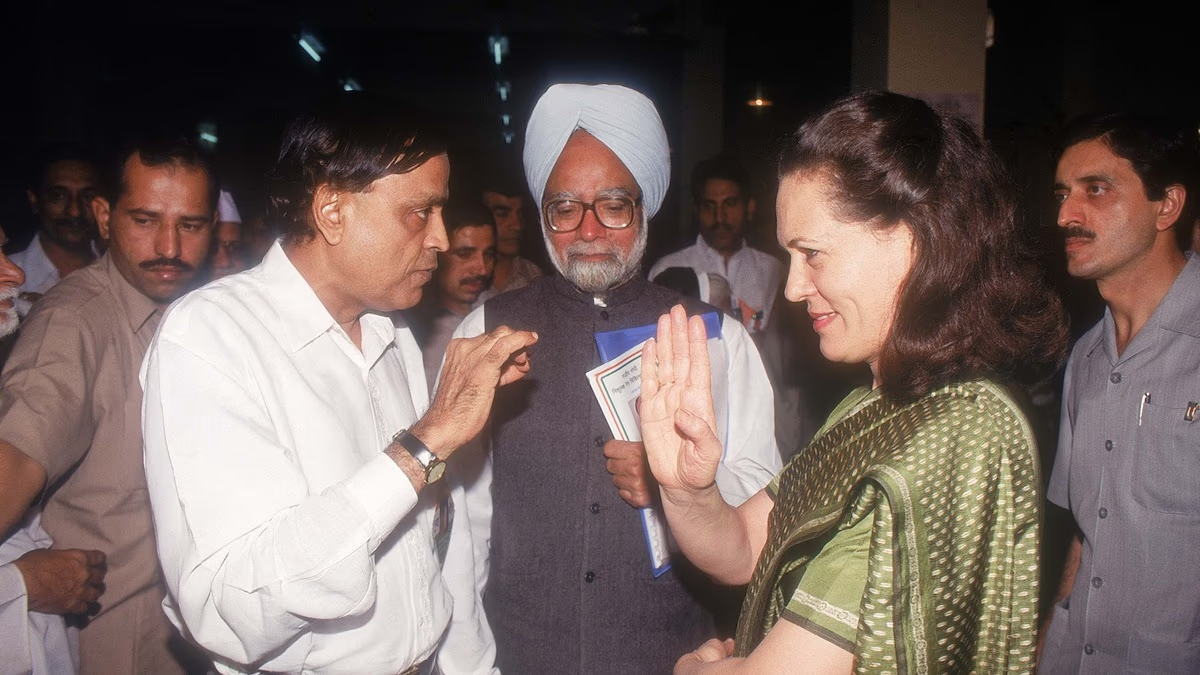
Source: aajtak
Dr. Singh's academic brilliance was undeniable, with teaching roles at Punjab University and Delhi School of Economics showcasing his prowess. He also served with the UNCTAD Secretariat, which led to his appointment as Secretary-General of the South Commission in Geneva from 1987 to 1990.
The image shows Sonia Gandhi listening to Murli Deora, with Manmohan Singh. (Photo - India Today Group)
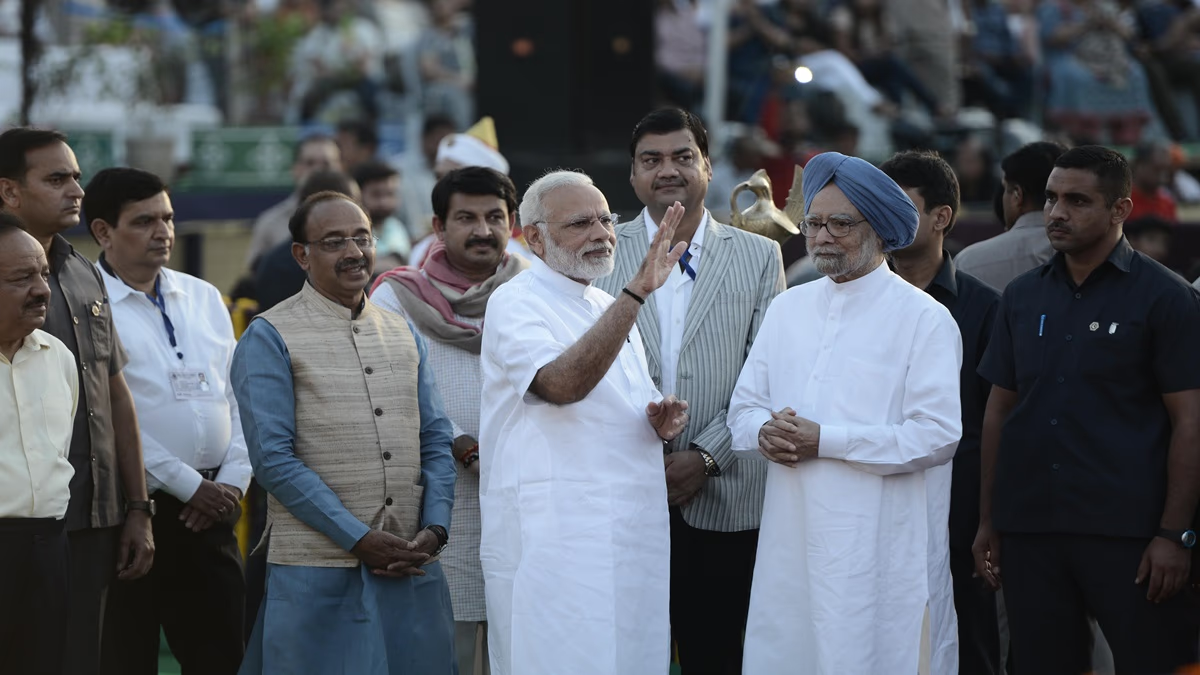
Source: aajtak
A few notable accolades awarded to Dr. Singh include India’s second-highest civilian honor, the Padma Vibhushan (1987), the Jawaharlal Nehru Birth Centenary Award of the Indian Science Congress (1995), the Asia Money Award for Finance Minister of the Year (1993 and 1994), the Euro Money Award for Finance Minister of the Year (1993), and the Adam Smith Prize from Cambridge University (1956).
This image captures Prime Minister Narendra Modi, Manmohan Singh, and other BJP leaders during Dussehra on September 30, 2017, in New Delhi. (Photo: Chandradeep Kumar/India Today Group)
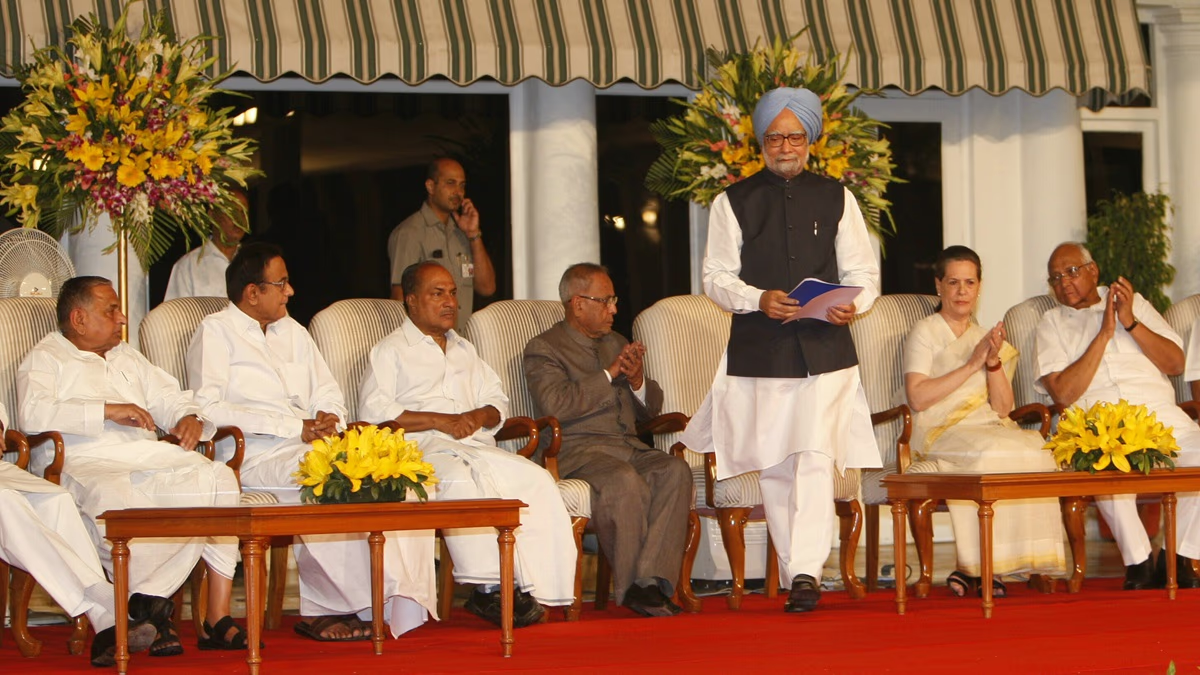
Source: aajtak
Dr. Singh was also awarded the prestigious Wright’s Prize for distinguished performance at St. John’s College, Cambridge in 1955. Further accolades came from Japanese journals and other associations, while honorary degrees were bestowed upon him by numerous universities, including Cambridge and Oxford.
In this photo, Prime Minister Manmohan Singh, Sonia Gandhi, NCP leader Sharad Pawar, central Finance Minister Pranab Mukherjee, central Defense Minister A.K. Antony, and others are seen during the third anniversary of the UPA-2 government in New Delhi. (Photo - India Today)
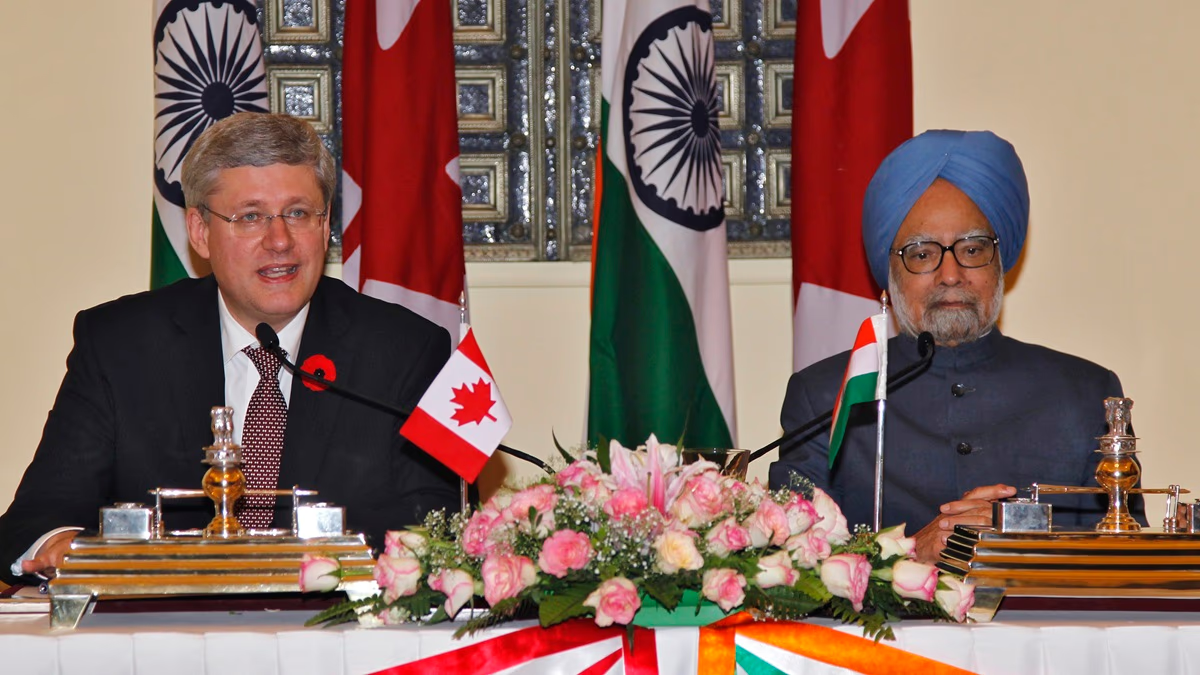
Source: aajtak
Dr. Singh represented India at various international organizations and conferences. He led the Indian delegation at the Commonwealth Heads of Government Meeting in Cyprus in 1993 and the World Conference on Human Rights in Vienna.
Pictured here is Canadian Prime Minister Stephen Harper (left), addressing the media with his Indian counterpart Manmohan Singh on November 6, 2012, in New Delhi, after signing ceremonies. These agreements enabled Canadian companies to export uranium and nuclear reactors to India for the first time. (Photo - Reuters)


